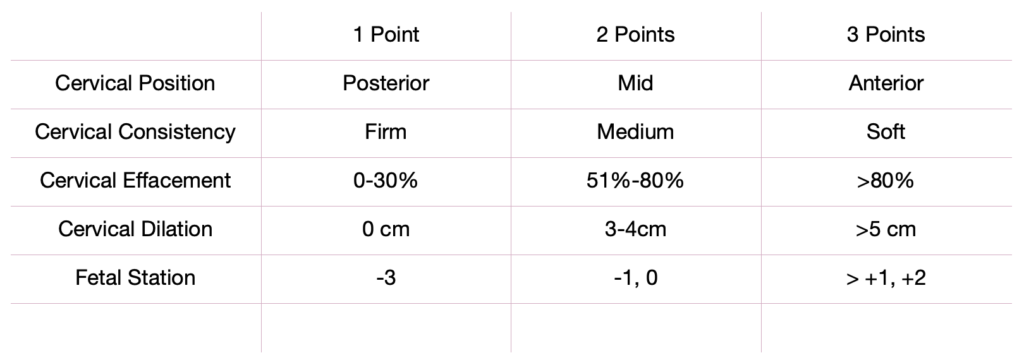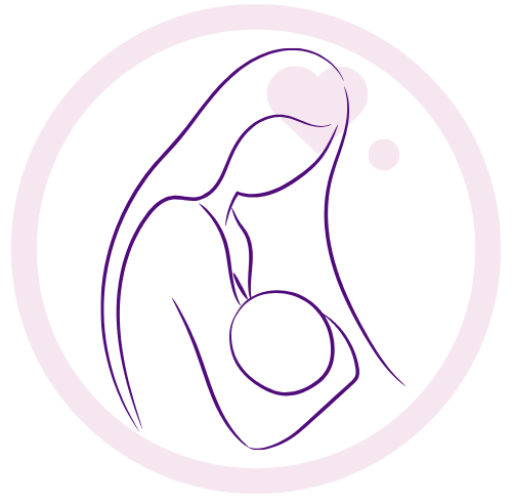Dear Expectant Parents,
So you’re nearing your due date! We know that amidst all the excitement, there are still a lot of unknowns. One of the choices most parents face around (and past) 40 weeks is whether they should induce. This is a tough choice and one that can be frustrating to settle. In 1964, Dr. Edward Bishop created a tool to help parents determine if mom should be induced. It is called the Bishop Score. The score takes into account five components that can all be determined from a vaginal exam. Let’s first explore what each component means:
– Cervical Position: During pregnancy, the cervix (opening to the uterus) is positioned posteriorly, or towards mom’s back. This helps protect from infection or injury. As labor is imminent, the cervix will begin to move back to the front.
– Cervical Consistency: During pregnancy, the cervix is firm, like the tip of your nose. Due to the increase of Estrogen, the cervix’s consistency will change to be more like that of your lips.
– Cervical Effacement: The cervix is about four centimeters long during pregnancy, after it begins to soften, it will begin to thin. 100% effacement signifies a paper-thin cervix that is ready to open.
– Cervical Dilation: Measured in centimeters, dilation is the measurement of the cervix’s opening. 10 centimeters is considered fully dilated.
– Fetal Station: As your body prepares for your labor, your baby also begins to descend into your pelvis. Fetal station indicates the position of the baby’s head in the mom’s pelvis.
Below is a chart that outlines how you can calculate your bishop score:

You can score anywhere from 0-12. If you score 8 or more points, you most likely will start labor soon, this also signifies that should an induction be needed it is likely to be successful. A score of 6-7 points is not a great predictor. However, a score of 5 or fewer points indicates that an induction is less likely to be successful, and if you are close to 42 weeks gestation you are more likely to need an induction. Next we are going to explore some amazing natural induction options based on your Bishop score:
Bishop Score of 0-4
In this range of scores, the cervix is likely still firm, not effaced, and not open. Natural induction options include:
- Evening Primrose Oil: This is a natural oil that contains gamma-linolenic acid. EPO has been shown to help soften and thin out the cervix. It can be taken orally or applied vaginally.
- Nipple Stimulation: Stimulating the nipples increases the flow of oxytocin, which can help “jumpstart” and increase cervical effacement as well as contractions.
- Acupressure and Acupuncture: These methods have been used in traditional medicine for hundreds of years to induce labor. Targeting certain points can increase cervical effacement, uterine contractions, and help manage pain.
Bishop Score of 5-7
With a bishop score of 5-7 your cervix may be ready to start dilating, but contractions have not started to begin that process, or the baby has not yet begun to descend into positions. The following induction options will help in this range:
- Raspberry Leaf Tea: Raspberry Leaf Tea has been used for centuries due to its ability to strengthen and tone the uterine muscles. This can help in preparing the uterus for labor and increasing the efficiency of contractions.
- Walking and Upright positions: Gravity can also cause baby’s head to apply pressure to the cervix, helping it to dilate. Walking and staying mobile will help in moving your hips to allow baby to move into position faster.
- Castor Oil: The same group of nerves that stimulates bowel contractions, also stimulate uterine contractions. Because of this, drinking castor oil can help start or increase uterine contractions.
- Sexual Intercourse: Like nipple stimulation this increased oxytocin and can help jumpstart contractions. In addition, semen contains natural prostaglandins, which help soften the cervix.
Bishop Score of 8-12
In this range your body is ready for labor, and it will most likely begin soon. Here a few things to try to speed up the process:
- Light Exercise: For momma, staying mobile and listening to your body is very important. Squats, lunges, walking, or other light exercise can help move baby into position and increase dilation.
- Relaxation: Fear, anxiety, and tension are some of the greatest inhibitors of labor. Staying relaxed and positive is a great way to help the process of birth flow easier and quicker.
Understanding the bishop score, how to calculate it, and what natural induction options might work for you, is empowering! So…to induce or not to induce? It can be a really tough question, but we hope that we’ve given you some valuable tools and knowledge to make informed decisions about your birth.
With Love,
Pearl
Resources
- https://www.mamanatural.com/bishop-score/?authuser=0
- https://www.healthline.com/health/pregnancy/natural-ways-to-induce-labor
- https://health.clevelandclinic.org/what-natural-ways-to-induce-labor-actually-work
- https://www.nebraskamed.com/health/conditions-and-services/pregnancy-and-birth/natural-methods-of-inducing-labor
